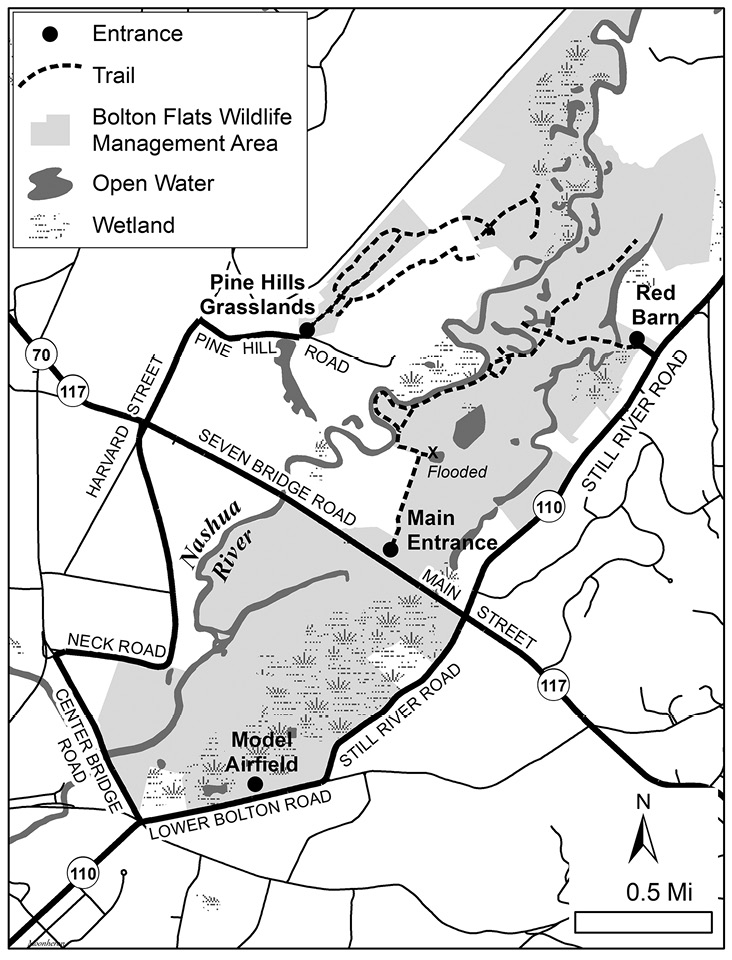Kevin Bourinot
 “Ahhh, I love the smell of mudflats in the morning!” This is the phrase I often say to myself as I step out of my car at Bolton Flats Wildlife Management Area during migration. The smell is unique: a combination of warm wet earth, decay, and crisp morning air. The area is prone to flooding, which often creates the perfect conditions for an environment teaming with invertebrates and aquatic plant life. At first you might think I am being sarcastic and that my description of Bolton Flats is intended to put you off making a visit, but when it comes to birding, this situation provides an abundant food source for sometimes thousands of individuals of amazing migrant bird species. So, I do in all seriousness love the smell of mudflats in the morning.
“Ahhh, I love the smell of mudflats in the morning!” This is the phrase I often say to myself as I step out of my car at Bolton Flats Wildlife Management Area during migration. The smell is unique: a combination of warm wet earth, decay, and crisp morning air. The area is prone to flooding, which often creates the perfect conditions for an environment teaming with invertebrates and aquatic plant life. At first you might think I am being sarcastic and that my description of Bolton Flats is intended to put you off making a visit, but when it comes to birding, this situation provides an abundant food source for sometimes thousands of individuals of amazing migrant bird species. So, I do in all seriousness love the smell of mudflats in the morning.
Bolton Flats Wildlife Management Area (WMA) is a portion of the Nashua River Watershed Important Bird Area (IBA), protected land that spans over 1,000 acres and offers visitors a wide diversity of birds, plants, arthropods, amphibians, and reptiles. In addition to being a critical breeding location for state-listed marsh and grassland birds, waterfowl, and passerines, it is also an extremely important migrant stopover and is the breeding ground of many vulnerable species such as the Blanding’s turtle and the ringed boghaunter dragonfly.

Map of Bolton Flats Wildlife Management Area.
To view the rest of the article you'll need to
subscribe. Bird Observer publishes original articles on birding locations, on avian populations and natural history, on regional rarities, field notes, field records, photographs, and art work.